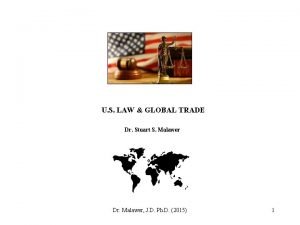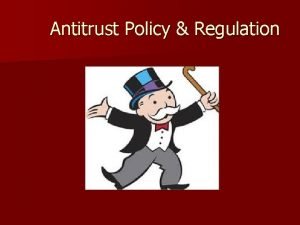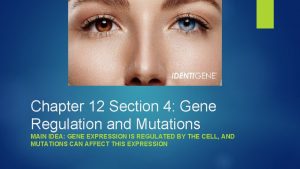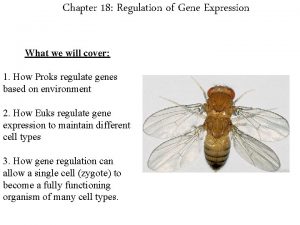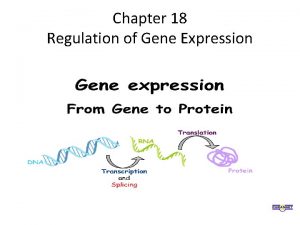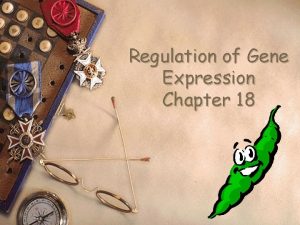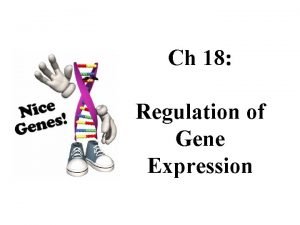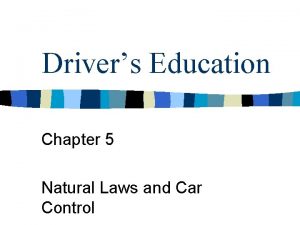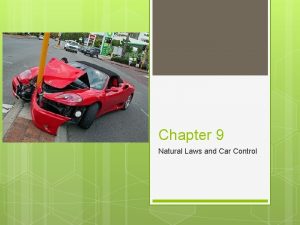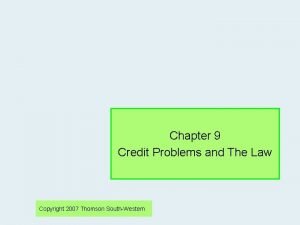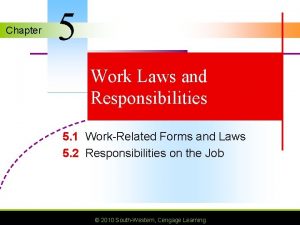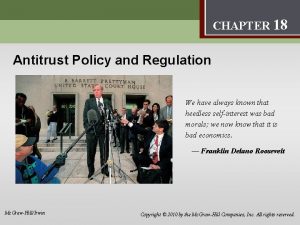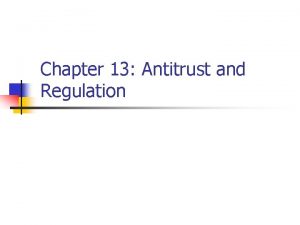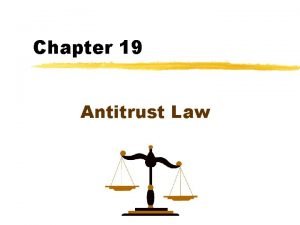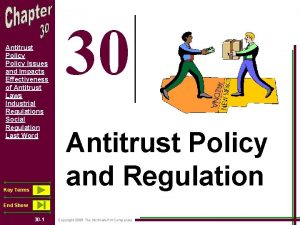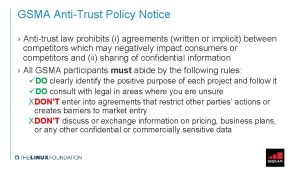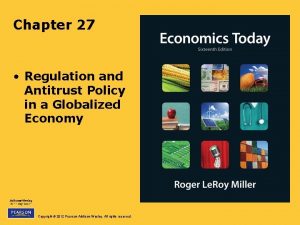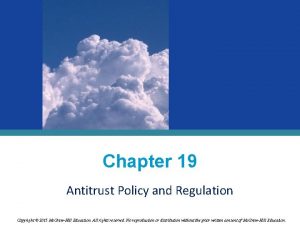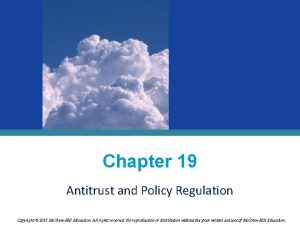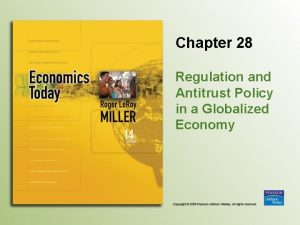Chapter 19 Antitrust Policy and Regulation Antitrust Laws












- Slides: 12

Chapter 19 Antitrust Policy and Regulation

Antitrust Laws • • LO 1 The purpose: • Prevent monopolization • Promote competition • Achieve allocative efficiency Historical background • Regulatory agencies • Antitrust laws 19 -2

Antitrust Laws • • LO 1 Sherman Act 1890 Clayton Act 1914 • Outlaws price discrimination • Prohibits tying contracts • Prohibits stock acquisition • No interlocking directorates Federal Trade Commission Act 1914 • Wheeler-Lea Act 1938 Celler-Kefauver Act 1950 19 -3

Antitrust Policy: Issues and Impacts • • LO 2 Issues of interpretation Monopoly behavior vs. Monopoly structure • 1911 Standard Oil Case • 1920 U. S. Steel Case • 1945 Alcoa Case Relevant market • 1956 Du. Pont Cellophane Case Issues of enforcement 19 -4

Effectiveness of Antitrust Laws • • LO 2 Monopoly • AT&T • Microsoft Case Mergers • Horizontal merger • Vertical merger • Conglomerate merger 19 -5

Mergers • • LO 2 Merger guidelines • The Herfindahl Index Price fixing Price discrimination Tying contracts 19 -6

Industrial Regulation • • LO 3 Natural monopoly Economies of scale Public utilities • Electricity, water, gas, phone Solutions for better outcomes • Public ownership • Public regulation • Public interest theory of regulation 19 -7

Problems with Industrial Regulation • • • LO 3 Regulators establish rates to give natural monopoly “fair return” No incentive to reduce cost X-inefficiency Perpetuating Monopoly • Conditions of natural monopoly can end Legal Cartel Theory of Regulation 19 -8

Deregulation • • • LO 3 Began in the 1970 s Has produced large net benefits for consumers and society Industries deregulated include: • Airlines • Railroads • Telecommunications • Electricity 19 -9

Social Regulation • • LO 4 Concerned with the conditions under which goods and services are produced Impact of production on society Physical qualities of goods Applied “across the board” to all industries 19 -10

Social Regulation • • LO 4 Optimal level of social regulation In support of social regulation Criticisms of social regulation Two reminders • There is no free lunch • Less government is not always better than more 19 -11

United States vs. Microsoft • • • Charged in May 1998 under the Sherman Act Accused of having a “Windows” monopoly District court findings: • Used anticompetitive means District court remedy Appeals court ruling Final settlement 19 -12
 Antitrust laws
Antitrust laws Antitrust laws
Antitrust laws Clayton antitrust act def
Clayton antitrust act def Charles de secondat
Charles de secondat Section 4 gene regulation and mutation
Section 4 gene regulation and mutation Chapter 18 regulation of gene expression
Chapter 18 regulation of gene expression Chapter 18 regulation of gene expression
Chapter 18 regulation of gene expression Chapter 18 regulation of gene expression
Chapter 18 regulation of gene expression Chapter 18: regulation of gene expression
Chapter 18: regulation of gene expression Chapter 5 natural laws and car control worksheet answers
Chapter 5 natural laws and car control worksheet answers Natural laws and car control quiz
Natural laws and car control quiz Chapter 9 credit problems and laws
Chapter 9 credit problems and laws Chapter 5 work laws and responsibilities
Chapter 5 work laws and responsibilities
